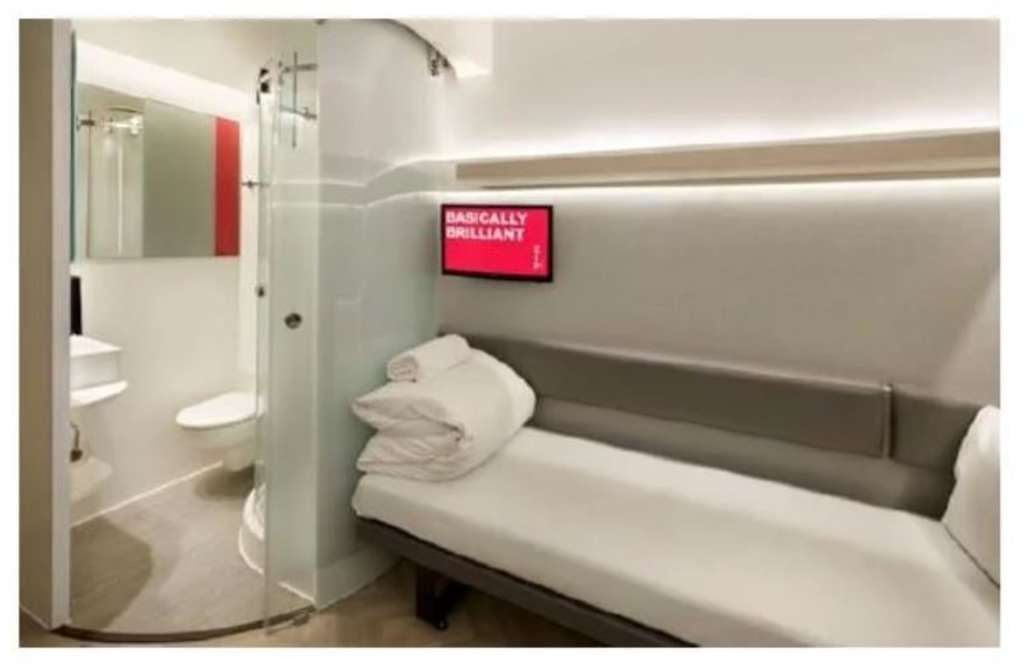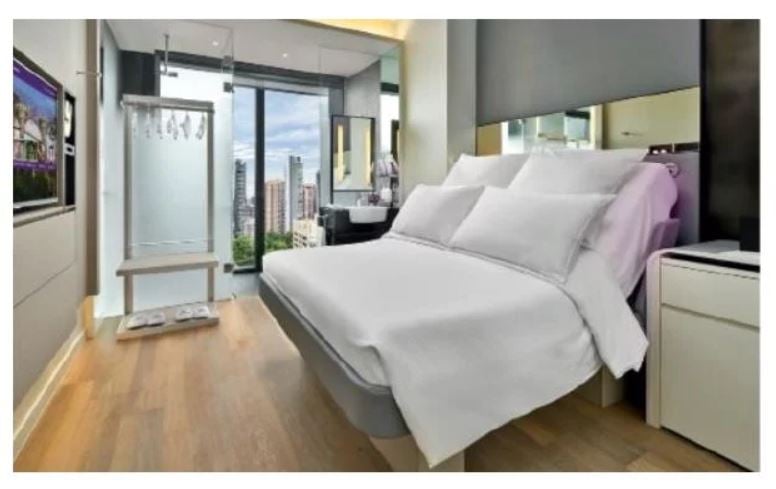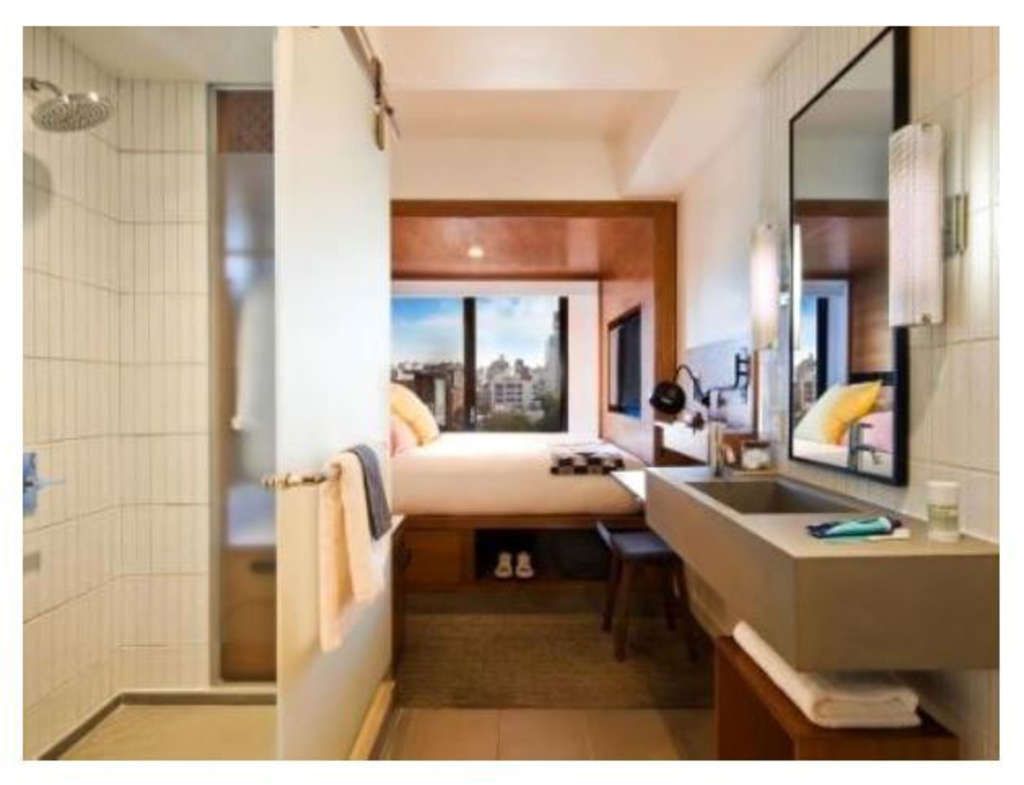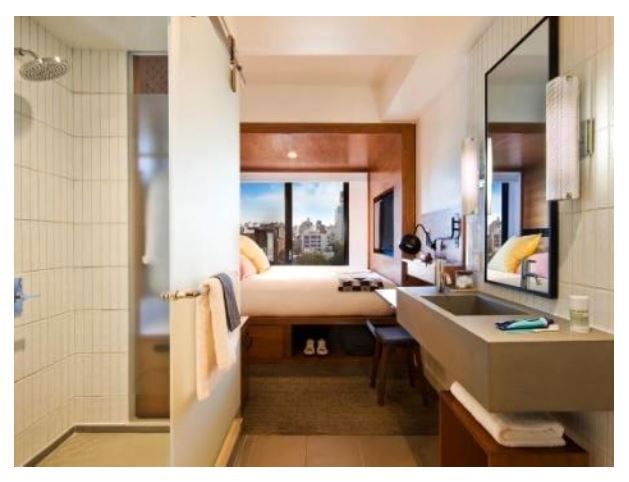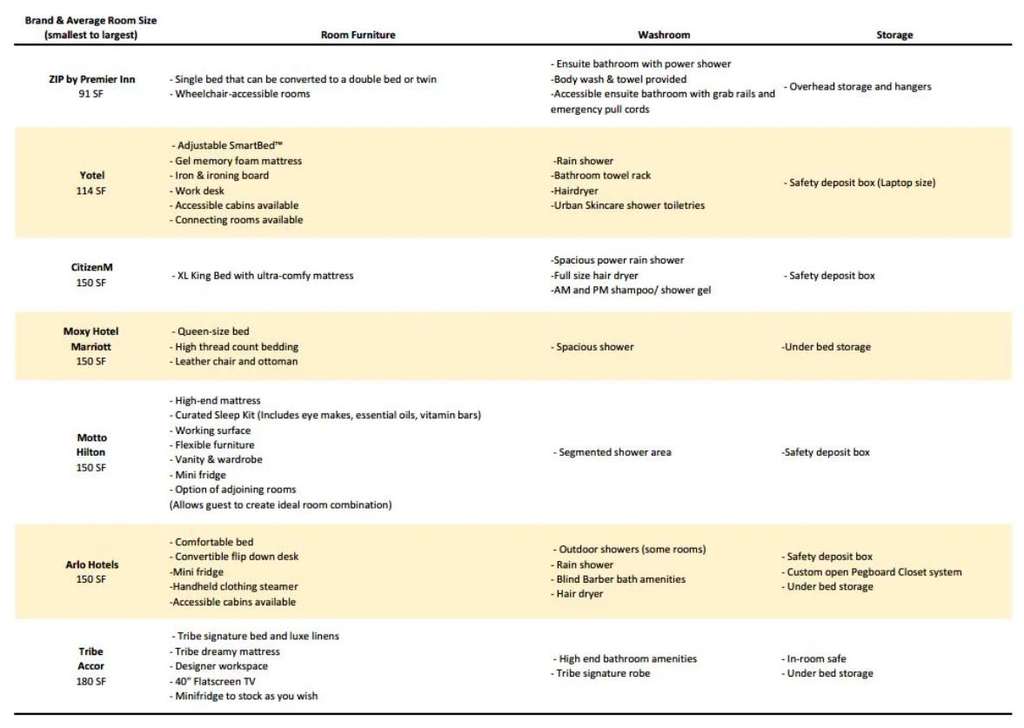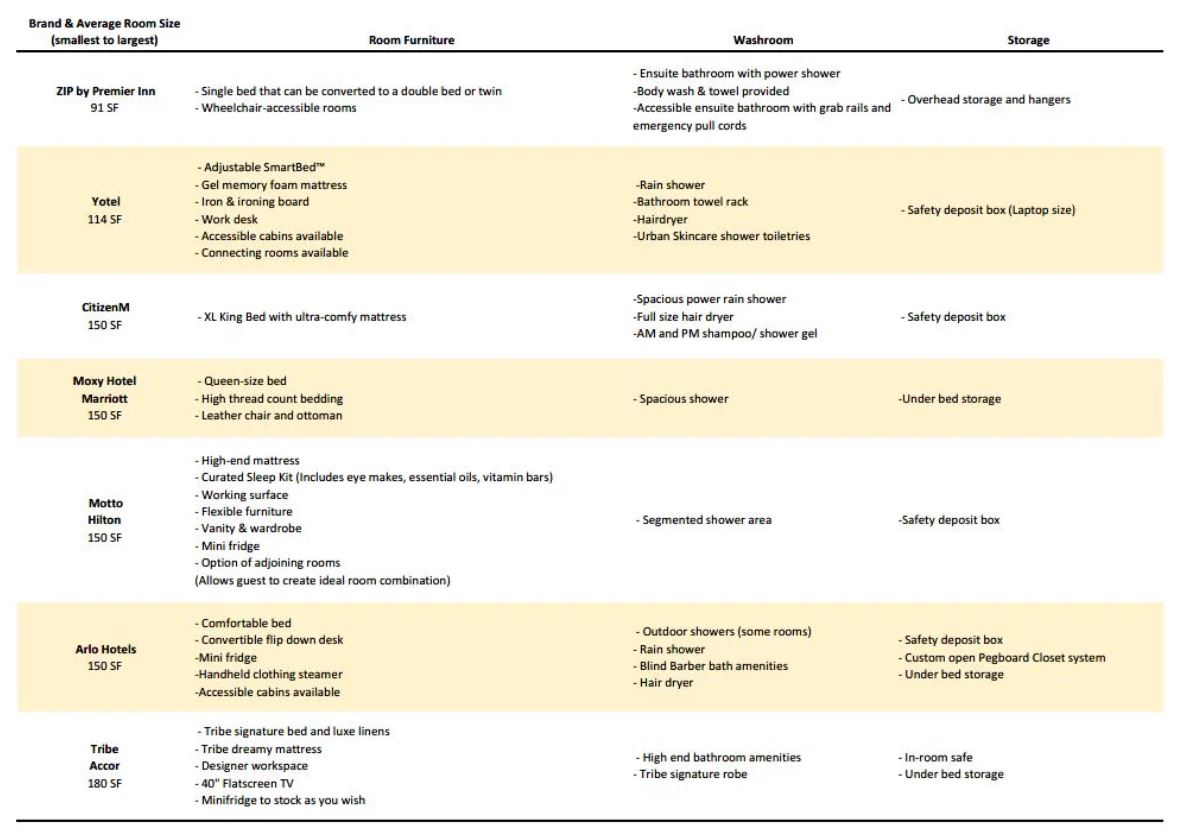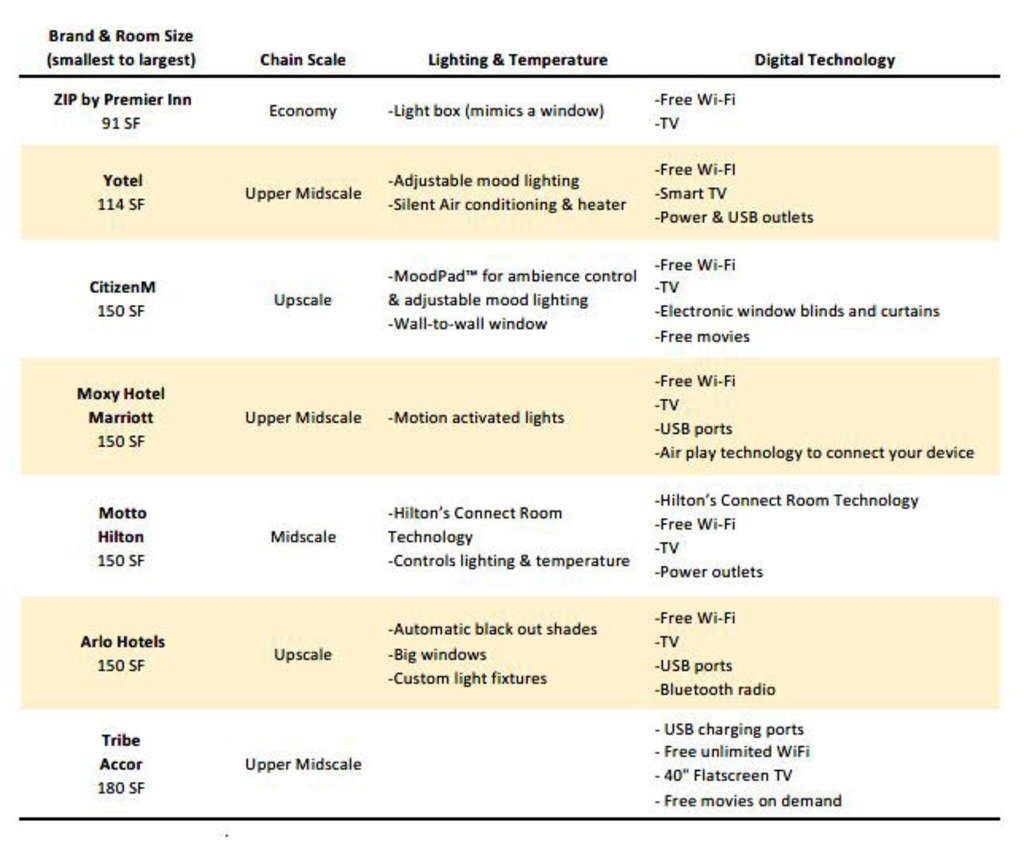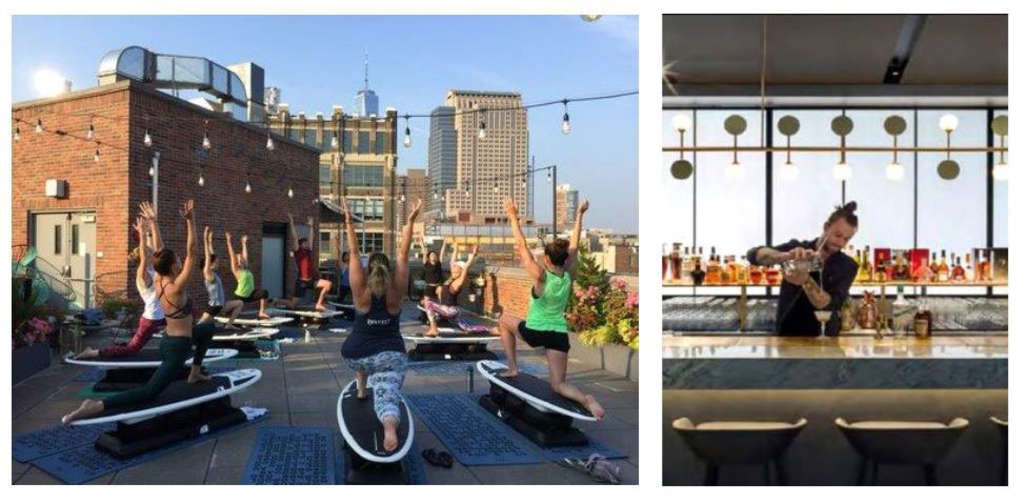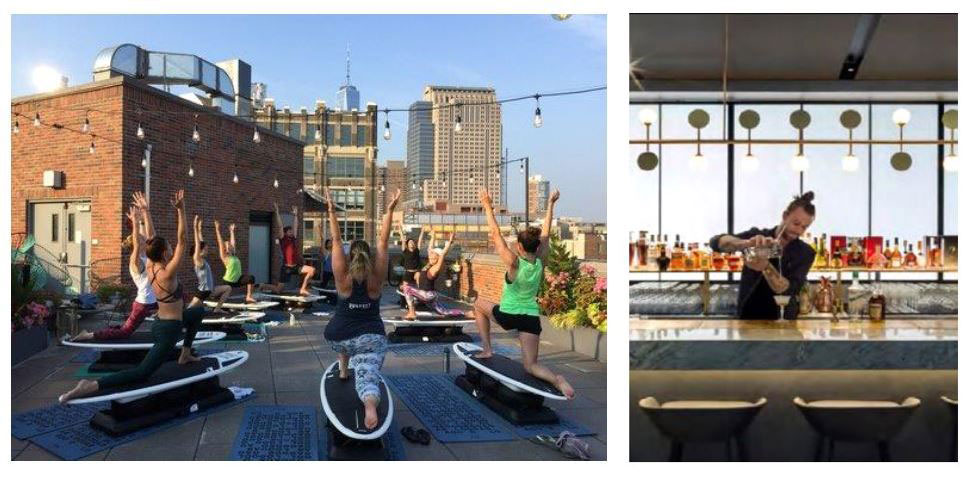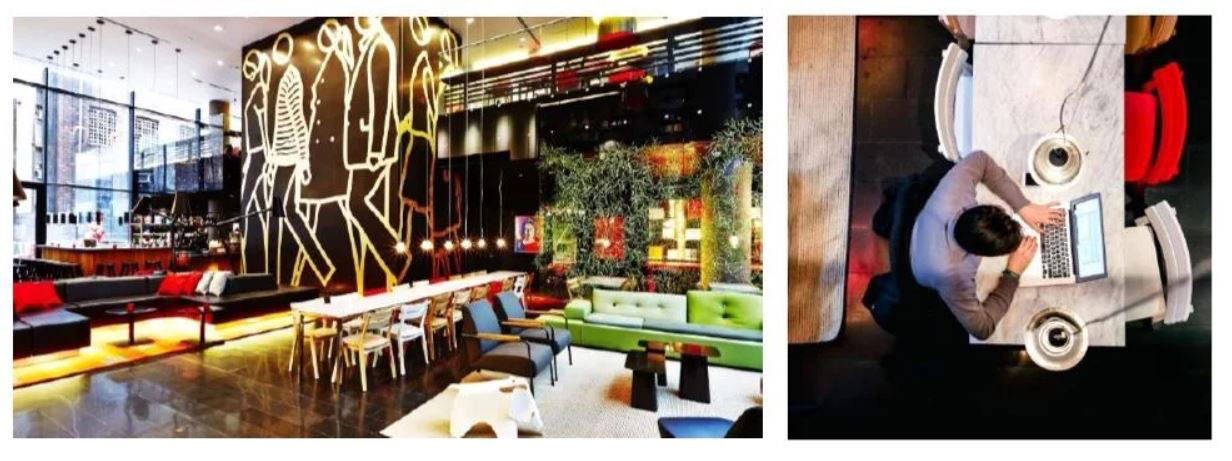The Growth of Micro Hotels in North America
The pod hotel concept that originated in Japan in the 1970s has evolved and become one of the latest innovative trends in hotel development and design. Pod-sized accommodation was initially intended for short-stay business travellers who required a private space with basic amenities. Fast forward to today and we see that the pod hotel idea has evolved to meet the growing demands of the mid-scale and millennial travel markets with the introduction of the "micro hotel." In this article, HVS defines what a micro hotel is, describes how room characteristics differ across brands, and identifies the markets that these pod-like accommodations are taking root in.
What is a Micro Hotel?
A micro hotel is a lodging facility that incorporates high quality furnishings and amenities in a room with half the square footage of a typical hotel room. These small but fully functional rooms are an affordable option for budget-conscious leisure and business travellers in high-density urban areas. The micro hotel concept combines smart design that was previously achieved by pod hotels with the digitization of rooms, which allows guests to curate their own room experiences through connected lighting and temperature controls via mobile applications. Because of the small size of the private spaces, the public spaces in the hotel play a critical role in fostering guest engagement and enhancing their travel experience. Typically, these hotels attract millennials who are comfortable exchanging guestroom size for the experiences of a lifestyle hotel.
Micro hotel developments are taking root in major cities with high land values and operational costs. In theory, these hotels offer investors a favourable return on investment through space optimization, which reduces building and operational costs.
Several micro-hotel brands have emerged and are looking to establish a presence in major North American cities. Micro-hotel brands take the form of either lifestyle or economy brands. ZIP by Premier Inn is an economy brand that offers a 90-square-foot room and limited food service. Yotel, on the other hand, started off as budget-priced airport accommodations but has since transitioned to city centers. This new brand offers small but functional rooms for young tech-savvy travellers. Independent brands, such as Arlo Hotel and CitizenM, are boutique-like lifestyle accommodations that heavily promote their food and beverage services and special events. Finally, Marriott, Hilton, and Accor have also created their own micro-hotel brands: Moxy, Motto, and Tribe, respectively.
Guestroom Characteristics
According to Scott P. Rosenberg of HVS Design, the size of micro hotel rooms differs from brand to brand, but the average room size is approximately 140 square feet. This is considerably smaller than a traditional hotel room, which is usually 330 square feet. Fitting all the guestroom components into half the space requires cutting-edge design, which in turn necessitates stronger collaboration between architects, engineers, and project managers. The micro-hotel brands have tackled these design challenges in unique ways. ZIP by Premier Inn collaborated with Priestmangoode, the design consulting company known for designing first-class aircraft cabins, to develop its micro-guestroom design. The first ZIP hotel launched earlier this year with an average room size of 91 square feet. Similarly, Marriott collaborated with IKEA to create prefabricated room fixtures for its micro-hotel brand, Moxy, thereby maintaining quality finishes at a lower cost. The furnishings are efficiently delivered through IKEA's flat-packaging technology, which allows for faster development timelines.
Room Amenities
Micro hotel designers attempt to anticipate the specific needs of their guests. In doing so, the room design can more accurately accommodate guest necessities, which leads to more efficient use of space. A common trend is to provide high-quality mattresses. Yotel offers an adjustable bed and Arlo Hotel uses luxury bedding with high thread count. Another major component is the strategic design of ensuite bathrooms to include all elements found in a regular-sized washroom.
Typically, this is achieved with high performing fixtures such as "power showers". Lifestyle hotels such as Moxy and Arlo have also partnered with local brands to offer unique bath soaps and shampoos. Finally, storage is another important component in the design of the micro hotels. All micro hotels provide a safety deposit box for valuables, which is usually big enough to fit a laptop. As well, there are storage areas designed for bulky items such as suitcases. Arlo and Moxy offers under bed storage and Yotel have overhead storage and hangers.
Differences in amenties are based on the market segmentation a hotel is trying to capture. Budget micro hotels like ZIP mainly target the business clientele. Therefore, the amenities offered are restricted to bed, bathroom, and storage. Boutique or lifestyle brands such as CitizenM, Motto, and Arlo offer additional amenities such as larger bed size, greater space, and more furniture. These lifestyle brands have also revised previously traditional amenities such as the iron and ironing board to more modern hand-held steamers. Finally, Motto by Hilton aims to create micro rooms that cater to families and groups travelling together by ensuring 30% interconnected rooms. Motto offers the option to book and confirm multiple adjoining room in advance and, bills guests separately under the same room.
Technology & Connectivity
The use of technology is growing in hotels. It is used to streamline operational processes and personalize the guest experience. In micro hotels, technology enhances a guest's connectedness to the appliances in a room. The ability to modify temperature and lighting controls or turn on the TV at your fingertips restricts the overall movement required in the room, which enhances the perception of space.
Large windows are a common feature across all the boutique and lifestyle brands because they create the illusion of openness to compensate for the reduced space. Similarly, sleek light fixtures and controls allow guests to transition between different settings to create their ideal environment. It is also common to include electronically adjustable lighting, temperature controls, and blinds. Blinds are a non-bulky alternative to curtains, which take up more space. Temperature controls are also common. Rooms in Motto are controlled through the Hilton's Connect room app, which allows guests to control all light fixtures from any location. Finally, technology enhances how connected a guest is to their room. Bluetooth or Air Play technology allows guests to connect to TVs and speakers, and motion-sensor lights create for a smoot h flow for movement around the room.
Public Spaces
Micro hotels emphasize communal spaces to foster interaction between guests and exposure to local culture. These spaces include fitness rooms, cafés, lounges, and pools, but the most popular amenities are bars and restaurants. Food and beverage amenities are key to the micro hotel experience and the level of service differs depending on guest preferences. ZIP by Premier Inn offers a limited choice hot breakfast priced at 3.95 EUR and light snacks for dinner. Lifestyle brands such as Moxy and Arlo attempt to create a lively community with their popular roof-top bars. Moxy hotel runs a 24-hour bar operation and Arlo's Bodega shop is an around-the-clock grab-and-go outlet. Traditionally, the food and beverage outlets in micro hotels are limited; however, Accor's hostel inspired JO&JOE brand reports 36% revenue from food and beverage alone [1]. Jo & Joe's most important food and beverage feature is the bar, which contributes to the social experience guests expect. On the other hand, the food provided is simple, high quality, and locally sourced. The diversity in experiential opportunities allows for additional revenue streams and contributes to the RevPAR.
Programming is another common service that micro hotels provide. Classes and tours create engaging spaces that attract the leisure segment. Arlo hotels in New York offer classes such as yoga, boot camp, pop-up product demos, and crowd-sourced art projects and live music [2]. Accor's Jo & Joe have what they refer to as a "collaborative kitchen" that hosts cooking classes and competitions. Organized events such as these allow guests to record and post their experiences on social media. The number of travellers making travel decisions based on destinations, accommodation, and activities seen online is increasing; therefore, efforts invested into cultivating authentic experiences can have a positive impact on capturing the target market.
Business travellers or "B-leisure" guests are also frequent visitors to micro hotels. These guests expect facilities to allow them to work remotely but are also interested in spending their off-work hours socializing and exploring the city. Some micro hotels are looking to build small conference rooms and lounge areas for both in-house and local guests. CitizenM Hotel in New York offers business day passes for 15 USD to any guest looking for a quiet facility to work in. The trend of co-working spaces within hotels is becoming more popular and we can expect to see micro hotels provide a similar service to their business clientele.
What Markets Are Micro Hotels Expanding To?
The industry has seen a spike in number of micro hotels in urban cities. Branded hotel giants and independent companies alike are looking to expand to North America following the demand evident in Asia and Europe. Hilton's Motto Hotel aims to launch their first property in 2020, in Marylebone in London. Following this, Motto hotel is forecasted to open properties in North American cities such as Boston, Washington DC, San Diego, and Savanah. Europe-based company, CitizenM, opened its Bowery Hotel in September last year and their next hotel is opening in Seattle. Standing 20 floors high and with 300 identical rooms, The Bowery is currently the tallest modular hotel. [3] Similarly, both Arlo Hotels and Marriott International continue to expand their brands in the US. Arlo has their third location opening in Midtown New York and Marriott's Moxy recently opened doors to Moxy Chattanooga in Nashville. Marriott anticipates five more locations will open in the US by the end of the year. [4] Yotel, which gained popularity as an airport hotel, has expanded to offer guest rooms in city centers. The urban locations where Yotel currently operates are Boston, New York, and San Francisco. Yotel has two more properties in the pipeline for major cities; one in Long Island City and the other in Miami. They are expected to open in 2020 and 2021, respectively. ZIP by Premier Inn and Accor's Tribe and JO & JOE currently have no locations in North America.
Conclusion
Micro hotels were developed to meet the growing needs of millennial travellers and accommodate the market for mid-scale hotels. These properties provide high-quality furnishing and amenities in a room half the size of a traditional hotel room. Micro hotels emphasize the unique highlights of each travel destination through locally inspired restaurants and bars, and engaging programming. These hotels also cater to business and group travellers by providing co-working areas and streamlining the process of booking and paying for interconnected rooms. There are several micro hotel brands that have emerged in North America. These hotels are either categorized as lifestyle boutique hotels or economy rooms. Marriott's Moxy seems to be the fastest-growing brand followed by Arlo Hotels and CitizenM. The micro hotel concept is still in the early stages of growth, but we can anticipate more properties to be introduced to the market in the coming years.
[1] Accor Hotels. (2019). JO&JOE Welcome to the open House [Fact sheet]. Retrieved from file:///C:/Users/sramchandani/Downloads/02ENJoJoeFactsheetFEB2019.pdf
[2] Why Tiny Rooms Hotels Are Going to Be A Big Trend In New York City. (2016). Retrieved from https://www.lonelyplanet.com/news/2016/09/28/hotel-brand-launches-nyc-micro-hotels/
[3] Wang, J. (2018). Inside CitizenM's New York Flagship, The World's Tallest Modular Hotel. Retrieved from https://www.forbes.com/sites/jennawang/2018/10/19/with-new-york-flagship-citizenm-seeks-to-increase-us-portfolio-by-700-in-2020/#3a6718b27d2c
[4] Moxy Hotels Expand in the Southeastern U.S. with Six Bold New Expected Openings. (2019). Retrieved from https://news.marriott.com/2019/01/moxy-hotels-expands-in-the-southeastern-u-s-with-six-bold-new-expected-openings/
